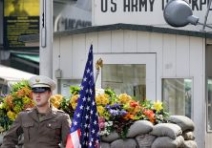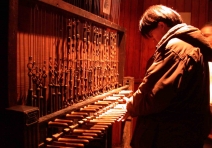WORLD TRAVEL NEWS ARTICLE

THE BATTLE OF WATERLOO - 200TH ANNIVERSARY
I feel it appropriate to commence this article with a message from the 8th Duke of Wellington, who is the Chairman of the Waterloo 200.
THE BATTLE OF WATERLOO - 200TH ANNIVERSARY
His Grace the Duke of Wellington, KG LVO OBE MC DL
‘I am often asked whether we should not now, in these days of European unity, forget Waterloo and the battles of the past. My reply is, history cannot be forgotten and we need to be reminded of the bravery of the thousands of men from many nations who fought and died in a few hours on 18th June 1815 and why their gallantry and sacrifice ensured peace in Europe for 50 years’.
Battle of Waterloo 1815 - William Sadler II
The Battle of Waterloo was fought on Sunday, 18 June 1815, near Waterloo in present-day Belgium, then part of the United Kingdom of the Netherlands. A French army under the command of Napoleon was defeated by the armies of the Seventh Coalition, comprising an Anglo-allied army under the command of the Duke of Wellington combined with a Prussian army under the command of Gebhard von Blücher.
Lord Arthur Wellesley - The Duke of Wellington
Upon Napoleon's return to power in March 1815, many states that had opposed him formed the Seventh Coalition and began to mobilise armies. Two large forces under Wellington and Blücher assembled close to the north-eastern border of France. Napoleon chose to attack in the hope of destroying them before they could join in a coordinated invasion of France with other members of the coalition. Waterloo was the decisive engagement of the Waterloo Campaign and Napoleon's last. According to Wellington, the battle was "the nearest-run thing you ever saw in your life". The defeat at Waterloo ended Napoleon's rule as Emperor of France, and marked the end of his Hundred Days return from exile.
Emperor Napoleon Bonaparte
Napoleon delayed giving battle until noon on 18 June to allow the ground to dry. Wellington's army, positioned across the Brussels road on the Mont-Saint-Jean escarpment, withstood repeated attacks by the French, until, in the evening, the Prussians arrived in force and broke through Napoleon's right flank. At that moment, Wellington's Anglo-allied army counter-attacked and drove the French army in disorder from the field. Pursuing coalition forces entered France and restored King Louis XVIII to the French throne. Napoleon abdicated, and travelled to Rochefort intending to flee France for the United States, but was persuaded to surrender to Captain Maitland of HMS Bellerophon, part of the British blockade, and was exiled to Saint Helena where he died in 1821.
General Gebhard Leberecht von Blücher
The battlefield is located in Belgium, about 15 kilometres (9.3 miles) south of Brussels, and about 2 kilometres (1.2 miles) from the town of Waterloo. The site of the battlefield today is dominated by a large monument, the Lion's Mound. As this mound was constructed from earth taken from the battlefield itself, the contemporary topography of the battlefield near the mound has not been preserved.
The events of 1815 were momentous both on and off the battlefield. It was a historical watershed which brought more than 22 years of conflict in Europe to a definitive close – it also affected many thousands of lives for much of the Nineteenth Century and beyond.
Waterloo June 2015
The spectacular Waterloo Panorama near the Lion Mound will feature a new show, opening in March 2015, explaining the context of the battle and how it shaped Europe by ensuring peace on the continent for more than 50 years.
Around the battlefield itself, most of the bicentennial activities will take place between Thursday 18th and Sunday 21st June. There’ll be a sound and light show around the Lion Mound, standing proudly near the centre of the Allied line, and the newly restored Hougoumont Farm buildings will be inaugurated, with performances by military bands from the various nations who took part in the battle. Hougoumont – the most evocative part of the battlefield - is where the Allies placed their right flank and had their first contact with the French. The resulting carnage shocked even battle-hardened Napoleonic veterans.
Hougoumont Farm buildings
At Plancenoit, where the advancing Prussians encountered the French right flank, up to 6,000 uniformed infantry, cavalry and artillery will stage a spectacular re-enactment of key phases of the battle on Friday evening and Sunday morning, and a son et lumière show is planned for Saturday evening. The uniforms and weapons of the participants are accurate copies of those worn and used by the soldiers on the day.
The Prussians attack Plancenoit - Adolf Northern
It’s astonishing to consider that less than a century later, the British and Prussians/Germans had turned from allies to bitter enemies. Their respective regiments, with the same battle honours on their flags, would fight each other to the death - almost on the same fields.
The commemorations of the bicentenary of the Battle of Waterloo
18 June 2015
- Official commemoration of the Bicentenary of the Battle of Waterloo, in the presence of military bands representing the nations present at the time.
- Bivouacs opening from 10:00 to 18:00. with animations. There is an Entrance fee.
- Show for the general public: from 21:00 to 22:00, including music and pyrotechnic, animations involving the re-enactors.
19 June 2015
- Departure from the Waterloo Dispatch: Waterloo centre and the Wellington Museum.
- Bivouacs opening from 10:00 to 18:00: with animations. There is an Entrance fee.
- The First Re-enactment: The Attack of the French Army: from 20:00
20 June 2015
- Bivouacs opening from 10:00 to 18:00. There is an Entrance fee.
- Entertaining diners in the bivouacs (Emperor Napoleon, Duke of Wellington)
- The Second Re-enactment: The Allied counterattack: from 20:00
Sunday 21 June:
- Procession of the French and allied cavalry in Waterloo and Braine-l'Alleud
- Divers animations.
Organise your trip
How to find an accommodation to attend the Bicentenary of the Battle of Waterloo, where to look at? Which Tour Operators to contact? This link here provides you with lots of practical information including accommodation, transportation, Tours Operators, and how to get to Waterloo. On the book page you will find a link to an excerpt from the chapter describing the battle of Quatre Bras, two days before the big fight at Waterloo:
http://www.bernardcornwell.net/books/waterloo-the-true-story-of-four-days-three-armies-and-three-battles/
Ticketing: For further information about tickets to the Waterloo Bicentenary event in June 2015 please visit the official website www.waterloo2015.org/en
* * *
To add to your enjoyment of this historic ocassion please read Bernard Cornwell's first non-fiction book which was published in the UK in September 2014. It is the true story of the epic battle of Waterloo – a momentous turning point in European history.
On the book page you will find a link to an excerpt from the chapter describing the battle of Quatre Bras, two days before the big fight at Waterloo:
http://www.bernardcornwell.net/books/waterloo-the-true-story-of-four-days-three-armies-and-three-battles
Bernard Cornwell is, to me, a brilliant writer of historic books, the best I have ever read. Famous for his Sharpe series of books, here he is bringing alive the triumph, falure, brutality and courage of the Battle of Waterloo to the pages in this fine book.
To purchase this book please click on the AMAZON BOOKS advertisement on this page.
You may also like to read

GERMANY - BERLIN - IT'S 25 YEARS SINCE THE WALL CAME DOWN
Amazing that 25 years have passed since the Berlin Wall was demolished.

BELGIUM - THE BELLS ARE RINGING
Tour-smart's Anna Hyman listened to the bells, looked for lace and took a tour around the ancient Flemish city of Mechelen.

Comments